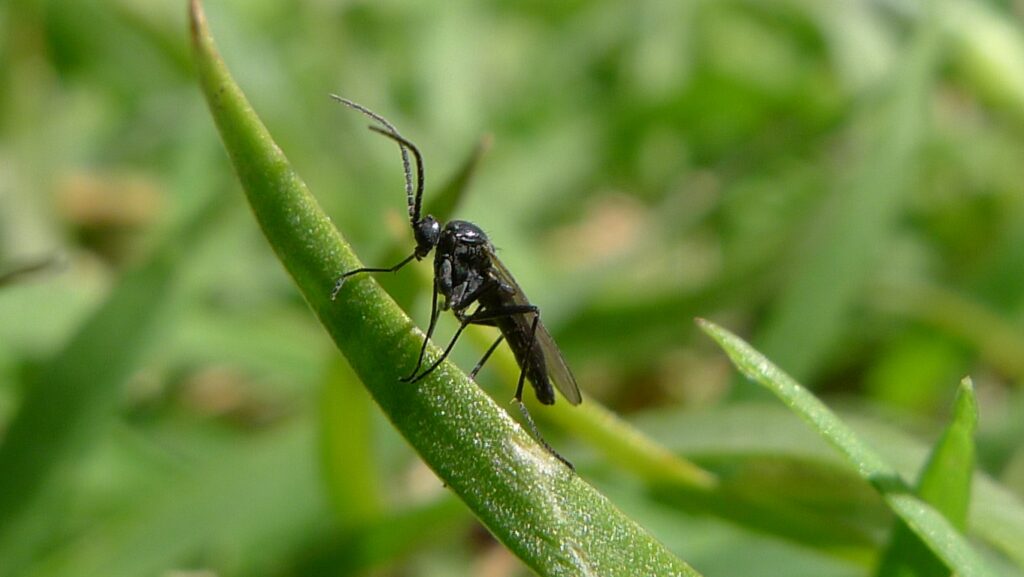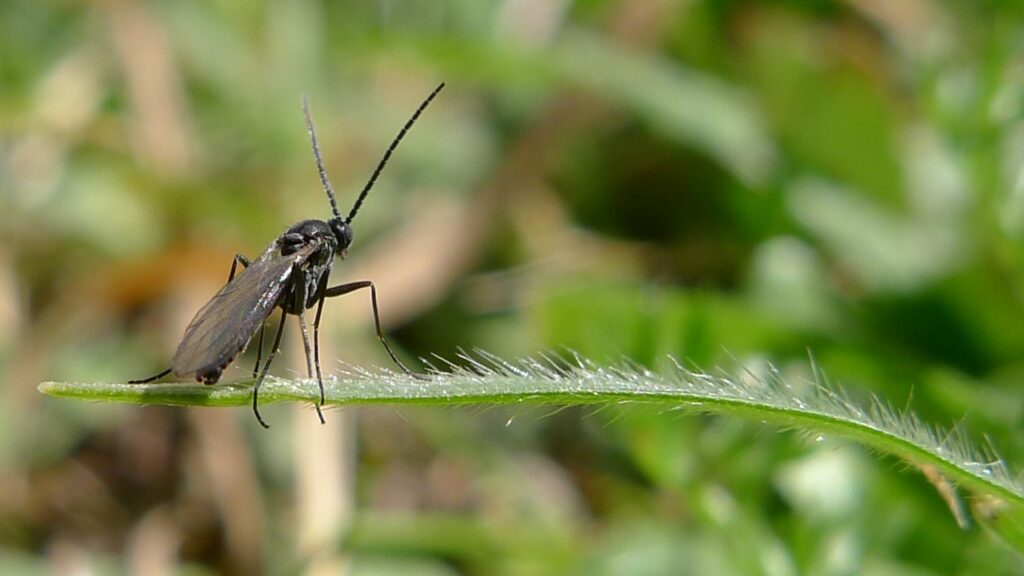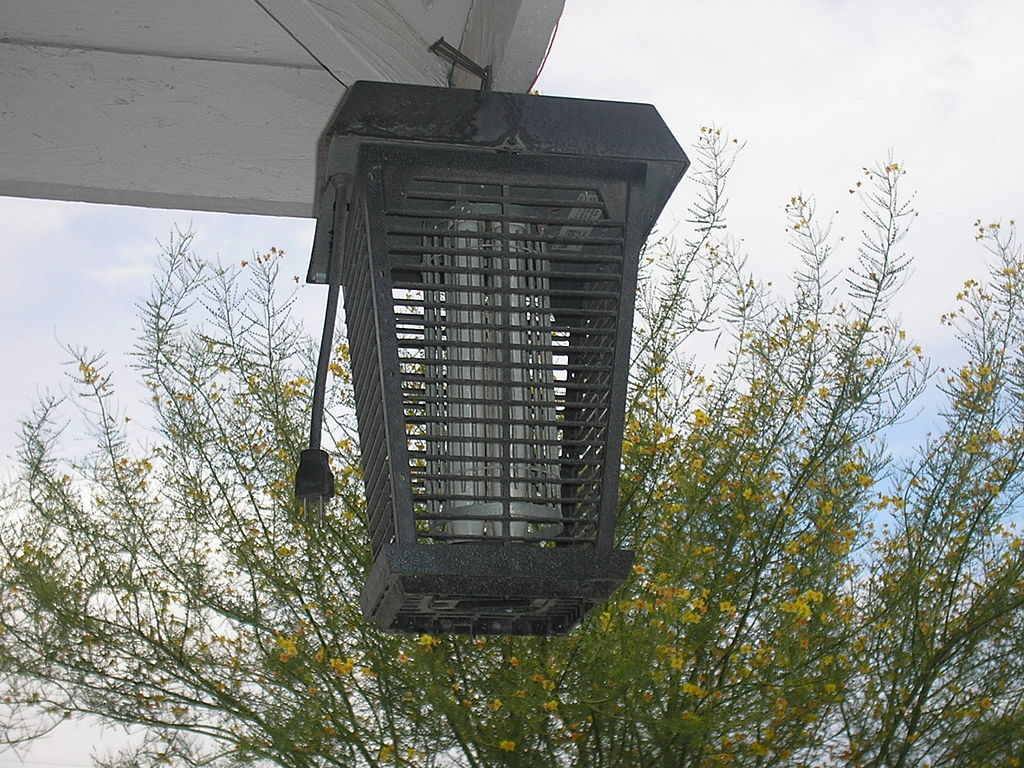CONTENTS

Effective Strategies: How to Get Rid of Gnats in House
Gnats can be incredibly annoying pests that can quickly become a nuisance in your home. Their small size and ability to reproduce rapidly make them challenging to eliminate.
If you’re tired of dealing with these pesky insects, fear not!
In this comprehensive guide, we will explore various effective strategies to help you eliminate gnats in your house. By following these tips and implementing the suggested methods, you can reclaim your home from these bothersome creatures.
Discover effective strategies on how to get rid of gnats in house with us now!
What Are Gnats?

Before we explore the methods how to get rid of gnats in house, let’s pause for a moment to gain a better understanding of the nature of these creatures.
Gnats, classified under the dipterid suborder Nematocera, are diminutive airborne insects. They are frequently encountered in environments with elevated moisture levels, including kitchens, bathrooms, and gardens.
Gnats are naturally inclined towards decaying organic substances, so they can often be heard buzzing around fruits, vegetables, and drains.
Types of Gnats

While they share some common characteristics, such as their small size and ability to fly, gnats can vary in appearance, behavior, and habitat. Here are the types of gnats:
Drain flies
Drain flies, also known as sewer gnats, are tiny insects that breed in damp, organic matter found in drains, sewers, and septic tanks. They are often attracted to areas with stagnant water and can quickly multiply if not addressed promptly.
Fungus gnats
Fungus gnats are small, dark-colored flies that thrive in damp soil and decaying organic material. They are commonly found in potted plants, particularly those that are overwatered or have poor drainage.
Fungus gnats can damage plant roots and hinder their growth.
Eye gnats
Eye gnats, which are sometimes referred to as grass flies or eye flies, are tiny flying bugs that have a strong liking for moisture and fluids around the eyes, nose, and mouth of animals and people. They can be bothersome, especially in outdoor areas with many animals or thick plants.
Black flies
Black flies, commonly called buffalo gnats or turkey gnats, are minuscule insects notorious for their painful bites. They tend to inhabit areas near bodies of water like rivers and streams, and their annoyance levels peak during the spring and summer seasons.
Fruit flies
Fruit flies are small, flying insects that are attracted to ripe or decaying fruits and vegetables. This gnat can frequently be spotted in kitchens, grocery stores, and places where food is stored or prepared.
Gnats flying reproduce at a rapid pace, which is why they are often considered a prevalent pest in households.
Ways to Get Rid of Gnats in Your House

Now that we have a better understanding of the different types of gnats let’s explore some effective strategies to eliminate them from your house.
Remember, persistence is key when dealing with a gnat infestation, so be prepared to implement multiple methods to achieve the best results.
Use a Bug Zapper
Bug zappers can be an effective tool for eliminating flying insects, including gnats. These devices use ultraviolet light to attract gnats and other pests, then electrocute them upon contact. Place bug zappers in areas where gnats are frequently seen, such as near windows or entry points.
Bleach Your Drains
To eliminate drain flies, focus on their breeding grounds within the organic matter that accumulates inside drains. Begin by thoroughly cleansing your drains using a combination of bleach and water. Pour the solution down the drains, scrub the surfaces meticulously, and rinse thoroughly.
Make it a habit to repeat this process regularly to prevent future infestations proactively.
Use Peppermint Oil
Peppermint oil is a natural gnat repellent that can help keep these insects at bay. Mix a few drops of peppermint oil with water in a spray bottle and apply it to areas where gnats are present, such as windowsills, doorways, and kitchen counters.
The strong aroma of peppermint oil acts as a deterrent and can help reduce gnat activity.
Set a candle trap
Craft a straightforward yet efficient trap for gnats using a candle. Illuminate a candle and position it in a shallow container brimming with soapy water.
The candle’s light will entice the gnats, luring them into the trap where they will become ensnared in the soapy water. This technique proves especially effective for capturing fungus gnats and fruit flies.
Entice them with Rotting Fruit
If you’re dealing with fruit flies, you can set a trap using rotting fruit as bait. Place a piece of overripe fruit, such as a banana or apple, in a jar or bowl.
Cover the container with plastic wrap and poke several small holes in it. The fruit flies will be attracted to the smell of the decaying fruit and will enter the container but will have difficulty escaping through the small holes.
Vinegar Traps
Vinegar is another effective ingredient for trapping and killing gnats. Fill a jar or bowl with apple cider vinegar and add a few drops of dish soap.
The gnats will be attracted to the vinegar scent but will get trapped in the soapy solution and drown. Place the vinegar traps in areas where gnats are most prevalent.
Use Boiling Water on Your Kitchen Drain
To get rid of drain flies, periodically pour boiling water down your kitchen drain. The high temperature of the water will aid in flushing out any organic debris and eradicate the eggs and larvae residing in the drain.
For additional cleansing and disinfection, follow up with a mixture of baking soda, vinegar, and dish soap to effectively sanitize the drain.
Install an Electric Insect Killer
Consider installing an electric insect killer, such as a bug zapper or an electronic fly trap, to control gnats and other flying insects effectively.
These devices attract gnats using ultraviolet light and then electrocute them, providing long-term gnat control in areas where they are a persistent problem.
Through Good Housekeeping
Maintaining a clean and tidy home is crucial in preventing and eliminating gnat infestations. Regularly clean up spills, empty trash cans frequently, and ensure tightly sealed food storage areas.
Keep fruits and vegetables refrigerated or stored in sealed containers to minimize the attraction of gnats.
Frequently Asked Questions
What smells keep gnats away?
Gnats are repelled by various scents. Some smells that help keep gnats away include lavender, eucalyptus, citronella, and lemongrass. Consider using essential oils or scented candles with these fragrances to deter gnats from entering your home.
Do dryer sheets repel gnats?
Due to their fragrance, Dryer sheets can be a temporary repellent for gnats. Placing dryer sheets near windows or doorways can help deter gnats from entering your home. However, keep in mind that the effect may be limited, and it is more effective to address the underlying causes of gnat infestations.
Where do gnats lay eggs?
The location where gnats lay their eggs depends on the specific type of gnat. Fungus gnats typically lay eggs in the damp soil of potted plants, while drain flies lay their eggs in the organic matter found inside drains. Fruit flies lay their eggs on ripening or decaying fruit and vegetable surfaces.
Conclusion
Learning how to get rid of gnats in house requires a combination of strategies tailored to the specific type of gnat infestation you’re dealing with. Using the techniques described in this article can significantly decrease the number of gnats and make your surroundings unwelcoming for these annoying bugs.
Just keep trying and be patient; before you know it, your house garden and home will be free from gnats!

